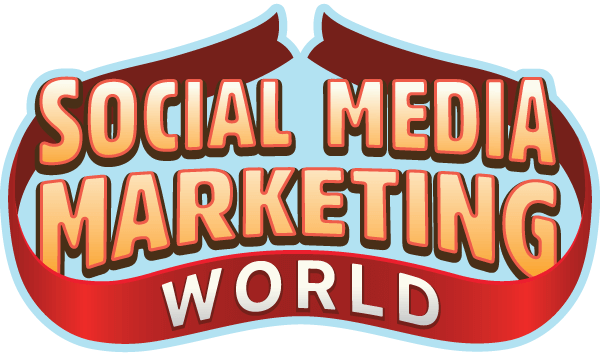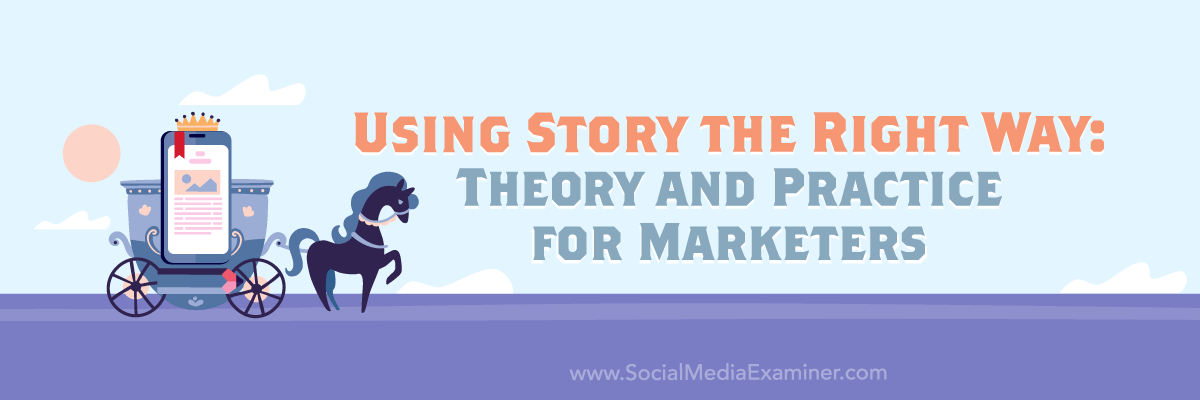Today's Guide to the Marketing Jungle from Social Media Examiner...
|
Presented by
|
 |
Tomorrow is National Button Day, Reader... Button, button, who’s got the button? And how is there no button emoji?
In today’s edition:
-
Today's 👉 Tip of the Day is for YouTube
-
📖 🎬 🎧 Crafting narrative stories that sell
-
🤳 Instagram expanded Reels ✂️ editing tools
-
🧵 Threads users get two anticipated updates
-
YouTube addresses future 🤖 AI content

Video metrics are an important part of developing an effective video marketing strategy. By tracking the right metrics, you can gain insights into what's working and what needs improvement.
When planning a video campaign or series, decide on 2–3 key metrics to track that will indicate success. Tracking just a few meaningful metrics in the beginning avoids data overload. You can add metrics as you become more comfortable.
Align the Metrics You Track to Video Goals
The first step is ensuring you track metrics relevant to the goal of each video.
For videos produced to build brand awareness, focus on reach and engagement metrics like views, retention, and social shares.
For videos produced to convert customers, prioritize click-through rates, website visits, and sales.
Then, look at how metrics for individual videos compare over time. Are views increasing or decreasing? How does the click-through rate compare to previous videos on the same topic? Checking data regularly helps you spot trends and issues early so you can optimize ongoing and future videos to improve performance.
Today's tip is inspired by Ben Amos, a featured speaker at Social Media Marketing World. Source: YouTube

Storytelling is a powerful tool for marketers. When done right, storytelling makes your content marketing more effective for several reasons.
Why Narrative Storytelling Works
Good stories help consumers process information and filter what’s important from extraneous details, transmitting key info to your audience.
Good stories influence opinions and behavior, nudging customers toward decisions like signing up for your email list or making a purchase.
Good stories quickly get people’s attention in an overloaded media landscape.
With these benefits, why doesn’t every brand master storytelling?
Why Storytelling Sometimes Falls Flat
Two main problems ruin narrative marketing:
First, is a lack of clarity. Without a definitive beginning, middle, and end that moves audiences through a narrative arc, they get lost.
Second, is that brands mistakenly make themselves the hero of their own story. For maximum impact, customers should be the protagonist. Your brand should take the role of the wiser guide.
When brands don’t stick to proven storytelling conventions, their narratives lack impact. Avoid these pitfalls by following a proven formula.
Crafting Compelling Narrative Stories for Marketing
The most engaging stories in film or literature adhere to a simple seven-part formula. When you adapt each element for narrative marketing, your tales will have clarity and emotional resonance.
Here is how to tailor the established Hollywood formula to your brand messaging:
The Hero: Place your customer in this role. They have a goal they want to achieve or a problem they need to solve.
The Problem: Outline the major obstacle or pain point standing in your customer’s way.
The Guide: Your brand takes this role. You offer knowledge, tools, and expertise to help customers overcome challenges.
The Offer: Present your product or service as the solution to the customer’s problem.
Call to Action: Urge customers to take the next step, whether signing up for a free trial or making a purchase.
Success: Describe how great customers' lives will be after embracing your solution and reaching their goals.
Failure: Warn about outcomes if customers don't take action. These could be inconveniences, lost opportunities, etc.
With this adapted formula, you have a blueprint for telling compelling brand stories with customers as the heroes.
Executing a Cohesive Brand Narrative
You don’t need to cram every storytelling element into each piece of content. But regularly incorporate parts of the formula into your messaging.
For example:
- Blog posts can describe the problem and solution in detail.
- Social media posts can highlight success scenarios.
- Email sequences can warn against inaction.
Emphasize the problem element frequently since that resonates most with audiences.
Over time, different pieces will come together into a cohesive narrative arc. Set up tracking to see which storytelling components perform best. Double down on those high-performing aspects.
Tips for Uncovering Your Unique Brand Story
If you’re unsure what story to tell, start by identifying target customer needs and motivations. Ask:
Why do customers buy from you? What’s their goal?
What do they say after making a purchase?
The first questions reveal their goals and problems. The second provides the end of their story—how you helped them succeed.
Next, if you serve multiple segments, brainstorm different customer personas and their narratives.
Finally, think about your brand’s role. As the guide, what solutions, expertise, and values do you offer to help customers achieve success?
Then, just follow the storytelling formula to craft compelling tales.
Today's advice is provided with insights from Dr. J.J. Peterson, a featured speaker at Social Media Marketing World.

Is it as Good as Everyone Says?
Wondering if Social Media Marketing World will help you? Here’s what some of your peers had to say:
“Within minutes, I knew I made a great decision. The connections I made and the information in the sessions have paid off tenfold,” said Noah Stanley.
"I've been wanting to attend this conference for years and finally got to go. It was phenomenal," said Regena Kowitz.
"I was blown away by the wealth of knowledge and expertise shared by the speakers," said Mohammed Yassine Ameur.
I want to experience the conference for myself!

🗞 Instagram Reels Editing Tools: The platform announced the rollout of updated native editing tools that let users scale, crop, and rotate individual clips; easily undo and redo edits; and more easily find tools such as Voiceover. Source: Instagram
🗞 Expanded User Controls for Threads: Two heavily anticipated updates are rolling out to Threads users. First, is control over whether your Threads posts appear on Instagram and Facebook. Second, you can now delete your Threads profile without deleting your Instagram account. Source: Adam Mosseri via Threads
🗞 AI Content on YouTube: YouTube announced it will introduce new measures to inform viewers when content contains synthetically generated or altered material, particularly around sensitive topics. This includes requiring creators to disclose when videos contain realistic altered or AI-generated content, adding labels to describe altered/synthetic content, and giving individuals the ability to request the takedown of AI-generated content using their image or voice without consent. YouTube stated that it will also apply AI technology to improve content moderation, using machine learning to more quickly identify emerging abuse. The company emphasized its responsible approach to developing AI tools, including partnering with the music industry and incorporating protections to prevent harmful AI-generated content. Source: YouTube
TOGETHER WITH YOUR BRAND

What makes for a great newsletter ad?
Do you have a useful resource for marketers? For example, a report, guide, or ebook? Is it gated behind an opt-in form so you can collect leads? If so, you might be a perfect candidate for a newsletter ad in this very publication.
If you want more brand exposure OR to bring in qualified leads for your sales team, why not chat with us and see if you're a good fit?
Contact Emily to place your ad here.
Did You Know?
The Cricket World Cup ends this week!

Michael Stelzner, Founder and CEO
P.S. Add
michael@socialmediaexaminer.com into your contacts list. Use Gmail?
Go here to add us as a contact.
We publish updates with links for our new posts and content from partners. Your information: Email:
you Opted in on: 2020-04-05 14:53:59 UTC.






